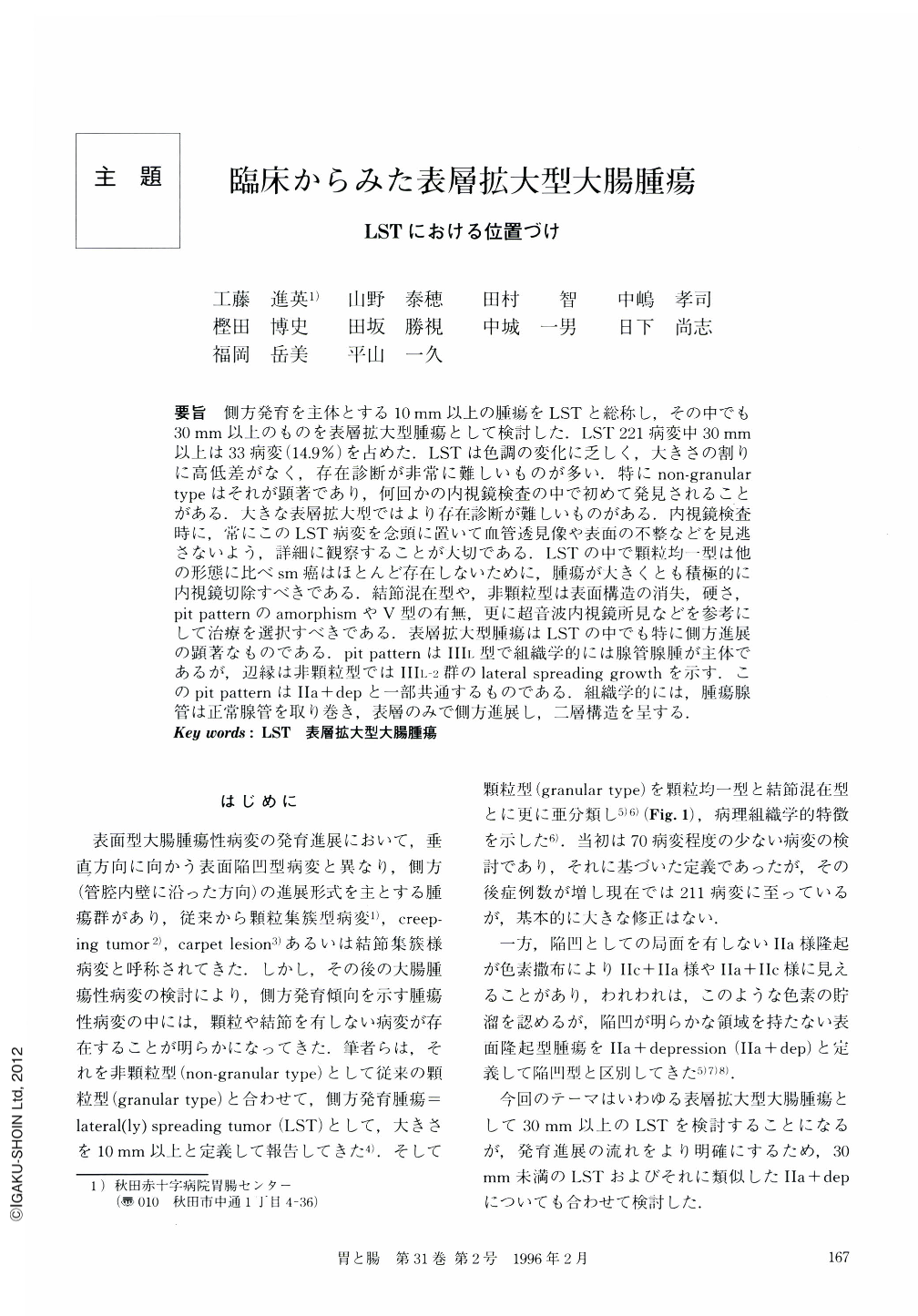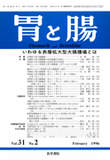Japanese
English
- 有料閲覧
- Abstract 文献概要
- 1ページ目 Look Inside
- サイト内被引用 Cited by
要旨 側方発育を主体とする10mm以上の腫瘍をLSTと総称し,その中でも30mm以上のものを表層拡大型腫瘍として検討した.LST221病変中30mm以上は33病変(14.9%)を占めた.LSTは色調の変化に乏しく,大きさの割りに高低差がなく,存在診断が非常に難しいものが多い.特にnon-granular typeはそれが顕著であり,何回かの内視鏡検査の中で初めて発見されることがある.大きな表層拡大型ではより存在診断が難しいものがある.内視鏡検査時に,常にこのLST病変を念頭に置いて血管透見像や表面の不整などを見逃さないよう,詳細に観察することが大切である.LSTの中で顆粒均一型は他の形態に比べsm癌はほとんど存在しないために,腫瘍が大きくとも積極的に内視鏡切除すべきである.結節混在型や,非顆粒型は表面構造の消失,硬さ,pit patternのamorphismやV型の有無,更に超音波内視鏡所見などを参考にして治療を選択すべきである.表層拡大型腫瘍はLSTの中でも特に側方進展の顕著なものである.pit patternはⅢL型で組織学的には腺管腺腫が主体であるが,辺縁は非顆粒型ではⅢL-2群のlateral spreading growthを示す.このpit patternはⅡa+depと一部共通するものである.組織学的には,腫瘍腺管は正常腺管を取り巻き,表層のみで側方進展し,二層構造を呈する.
Among colorectal neoplasms, there is a certain group that are very low in height and show a tendency to spread circumferentially along the colonic wall, which we have named Laterally-Spreading Tumors (LSTs). We have encountered 173 cases of LSTs more than 10 mm in diameter (among them, 33 cases were larger than 30 mm), and subdivided them into three groups; homogeneous granular, nodular mixed, and non-granular. Laterally spreading tumors, especially the non-granular type, show almost the same color as the normal colonic mucosa and are very low in height compared with their large diameter; therefore they are very difficult to detect. Endoscopic detection of LST depends largely on the examiner's awareness of the disease, and meticulous observation is needed not to overlook the disappearance of the vascular network pattern and the unevenness of the surface. Homogeneous granular type is seldom submucosally invasive, so a tumor of this type should be resected endoscopically as far as possible. The treatment of the nodular mixed type and non-granular type should be determined according to the endoscopic findings (surface structtre and consistency), pit pattern analysis with magnifying colonoscopy, and endoscopic ultrasonography. A typical LST shows long tubular-type pits (type ⅢL) and, histopathologically, is a tubular adenoma. In the non-granular type the margin shows a ⅢL-2A type pit pattern, which suggests lateral-spreading growth. This pit pattern is the same as that of some small adenomas with pseudodepression (Ⅱa + dep. lesions), which implies developmental continuity from a small adenoma to an LST. Histopathologically, the neoplastic glands surround the normal glands and superficially and laterally expand over them, resulting in the two-layer structure of the tumor.

Copyright © 1996, Igaku-Shoin Ltd. All rights reserved.


